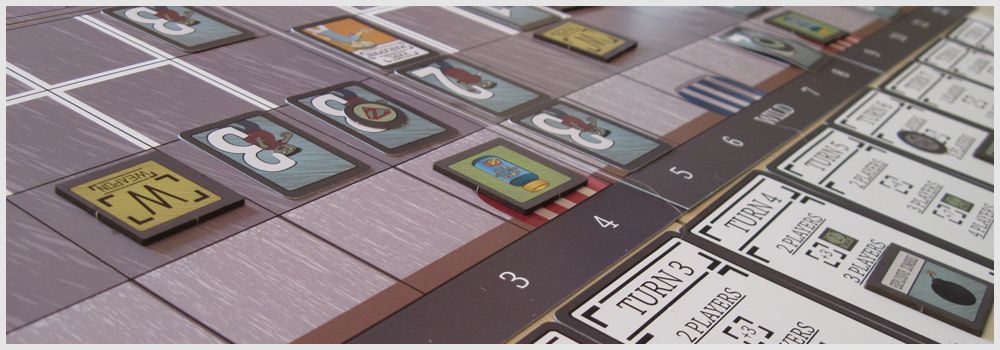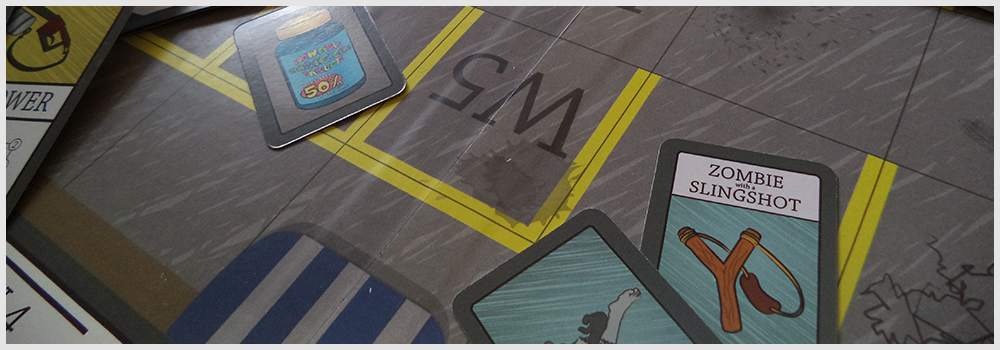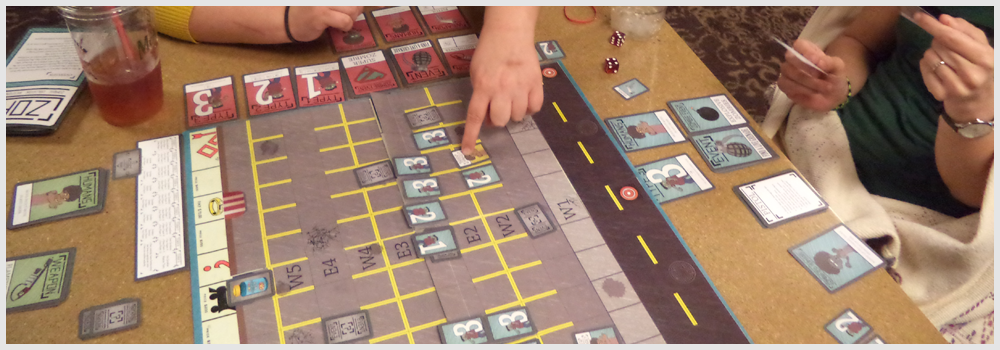ZORP (Zombie Oblivion Response Pack)
Casual Strategy Board Game
This is a casual strategy game designed to help introduce traditional board gamers to modern hobby games. I designed the game mechanics as well as the graphic design and user experience. Before it was published, the game was tested with nearly 200 players and received largely positive reviews from both regular players and professional reviewers alike.
Overview
Problem: Design a board game experience that’s intuitive for first-time players, affordable to produce, and easy to set up without sacrificing depth or enjoyment.
Platform: Tabletop game on The Gamecrafter
Process: Wireframe, Prototype, User Testing, User Interviews.
Tools: Paper-Prototypes, Illustrator, Photoshop, G Suite, After Effects.
My Role:
- Lead designer and developer of the entire player experience
- Created all visual assets and component UX
- Conducted iterative testing and implemented user feedback
- Balanced constraints between usability, gameplay, and production costs
- Tested prototypes with ~200 users (casual to experienced gamers)
- Observed setup behavior, rulebook usage, and gameplay flow
- Collected qualitative feedback and monitored hesitation/confusion points
- Identified common UX blockers in traditional board games, like complex rulebooks and non-intuitive setup
Design Challenges and Solutions
1. Board Design That’s Functional & Affordable
2. Rulebook & Learning Curve Optimization
3. Effortless Game Setup Without Manual
4. Component Ergonomics
Board Design That’s Functional & Affordable
Goals: Ensure components support game mechanics, remain visually thematic, and minimize printing costs.
Actions:
- Condensed box size and reduced printing costs by reducing large traditional board to set of nine board tiles
- Improved setup time of less familiar board type by labeling backface of board tiles

The main barrier to making this game affordable and space efficient came from the game design requirement that each turn the human players should feel a sense that they are being surrounded by zombies. This was to evoke a feeling of elation and victory whenever they were able to shoot their way out. Inevitably, the high volume of pieces needed to create this emotion meant that the board needed to be larger, resulting in a larger box as well. The primary value of starting with a large board was to cater to the segment of the audience that had a limited scope of board gaming experience. The sacrifice in board familiarity for this segment of the audience ended up being justified since I was able to ensure intuitive setup across demographics while bringing the cost and size down.
Rulebook & Learning Curve Optimization
Goals: Make the rulebook accessible for groups without a “rule explainer.”
Actions:
- Added visual quick-reference cards for weapon, event, and zombie types
- Ensured rulebook comprehension by observing fully unguided playtests on 4+ iterations of the rulebook

The major pain points players exhibited in learning the game came from remembering the specific nuances that differentiated one type of event, weapon or zombie from each other. I identified that players would often pass around the rulebook just to verify small details such as the ammo count of a particular weapon. By creating reference cards for the different weapons, events and zombies, I quickly solved the cumbersome impediment to gameplay that comes with referencing the rulebook and even identified that players were remembering the specifics more readily, even without actively referencing the cards or the rulebook.
Effortless Game Setup Without Manual
Goals: Allow players to set up the board correctly using thematically consistent visual cues on the components.
Actions:
- Used thematic markings (cracks, stains, awnings) for item placement
- Utilized sidewalk graphics and awnings to guide zombie and cure placement

ZORP offered options to randomize setup or to follow a recommended setup. The recommendations for setup would vary based on the number of players in the game in order to maintain a balanced experience. I identified that forcing players to refer to the rules to help them find the setup arrangement appropriate to their player count was slow and required a great deal of focus. As a solution, I introduced diegetic markers that fit the context of the world. The game took place in a parking lot, so visual elements like tire marks, pavement cracks and building awnings each provided a cue for setting up specific pieces. These visuals matched the game’s context and did nothing to affect gameplay. This solution resulted in minimal set up effort for first time players and returning players barely, if ever referred to the setup instructions before completing the set up.
Component Ergonomics
Goals: Ensure physical game pieces are easy to use and understand.
Actions:
- Characters and zombies printed on playing-card stock for easy shuffling
- Weapon and event tiles printed on heavier chipboard for tactile contrast

The game required a lot of components and keeping a uniform material type and shape was found to complicate the set up procedure and didn’t allow for any tactile variety during gameplay. I found that the large number of zombie components benefited from being printed on standard cardstock so that players could easily shuffle them before each game. On the other hand, there were far fewer events and weapons, so differentiating these components by putting them on chipboard allowed for much simpler component management. Players also reported that the heavier weight on these pieces made revealing them more satisfying.
Outcome & Impact
- Successfully launched on The Game Crafter
- Positive reviews from play testers and reviewers
- Reduced box size by ~78% and component costs by ~71%, making it more affordable and accessible
- Players were able to set up and learn the game with minimal guidance